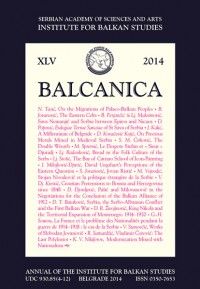The Eastern Celts and their Invasions of Hellenistic Greece and Asia Minor
The Eastern Celts and their Invasions of Hellenistic Greece and Asia Minor
Author(s): Borislav JovanovićSubject(s): History
Published by: Balkanološki institut - Srpska akademija nauka i umetnosti
Keywords: Celts; central Balkans; Scordisci; necropoles; warrior graves
Summary/Abstract: During the fourth century BC the Celts expanded into the Balkan Peninsula and the Carpathian Basin. After the major defeat at Delphi, in Greece, the surviving Celtic tribes formed an alliance under the name Scordisci. They settled in the wider territory around the confluence of the Sava and the Danube, which became a base for their subsequent invasions into Thrace and beyond. The Celtic presence in the region has been best documented by the necropoles in Karaburma (Singidunum) and Pećine (Viminacium). These graveyards had a complex arrangement of burials into groups and sections. The warrior graves contained pieces of weaponry showing decorative elements of both Western and Eastern Celtic art tradition. Some of the female graves contained rich personal adornment such as the coral bracelet and the Münsingen-type fibula in a grave in Pećine. Until the Roman conquest, the Scordisci remained the most powerful military force in the region.
Journal: BALCANICA
- Issue Year: 2014
- Issue No: 45
- Page Range: 25-36
- Page Count: 12

